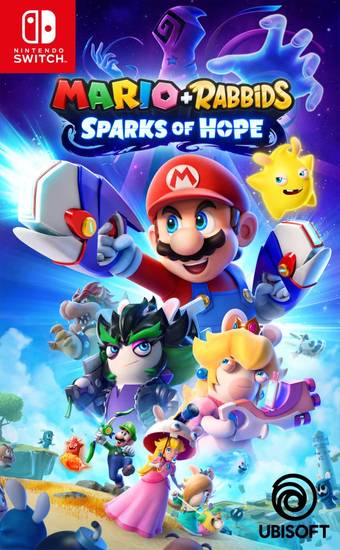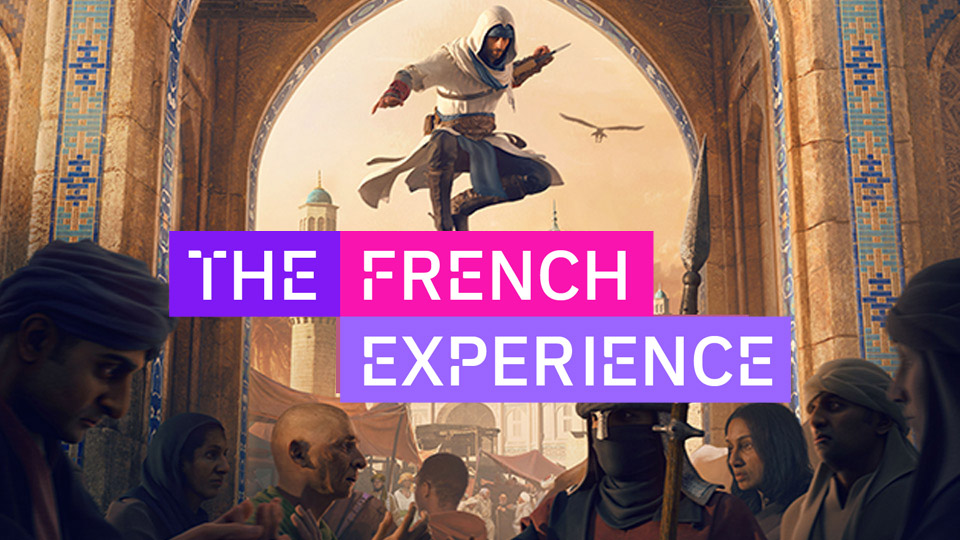How do you develop a game on a par with another studio?
Xavier Manzanares: It's true that our organization is very specific. It's what we call a "co-lead", a co-direction, which I've never seen elsewhere. Usually, it's more like co-development. Here, decisions are made on both sides. When we started talking about the first Mario + Rabbids in 2014-2015, we realized that there was a lot of creativity and passion at Ubisoft Milan and Ubisoft Paris, and that the two entities complemented each other. I arrived in the role of lead producer, which means I had to make sure that the overall project ran smoothly. A bit like a conductor. And it worked, even if it was a challenge: the gameplay programmers and game designers are in Milan, but the developers in charge of the game engine and the level designers are in Paris. Which may sound completely crazy! But with enough passion and confidence, we proved that it works. And after eight years, we're on our second game.
How do the two studios complement each other?
Xavier Manzanares: Davide Soliani, the creative director, is in Milan. He created a very strong link with the artists and animators there, which was crucial at the start of the project. And in Paris, engineers and level designers get along extremely well. So instead of trying to reproduce in each studio something that already exists in the other, the idea was to think of it as a puzzle: each studio is a piece of the puzzle, so let's finish it - without destroying everything! - rather than recreating the puzzle twice in each studio. It was sometimes complicated, but this work allowed us to look at the problems from another angle, since the philosophy is not quite the same between Paris and Milan, even though we all work for Ubisoft. In the end, we were able to invent things that would never have existed if we had done a simple co-development.
Cristina Nava: Our job was also to make sure that there was constant communication between the two studios, and that the information flowed well. We're used to working with other studios at Ubisoft Milan, on AAA or AAAA games. But a co-lead is something completely different. Both studios are responsible for the project. So the communication has to be all the more perfect.
How many people worked on the game between Paris and Milan?
Xavier Manzanares: There are about 320 people working on the game, which is quite a lot! About 100 people in Paris, 150 in Milan. And then there's the team from Ubisoft Chengdu, in China, who also work with us, about 80 people. For the cinematic scenes, we also got a hand from Ubisoft Pune in India. For comparison, 120 or 130 people worked on the first Mario + Rabbids.

The added difficulty with this game is that you are using Nintendo characters. How is this collaboration going?
Cristina Nava: We've had a long relationship with Nintendo, especially because Ubisoft has always been among the first to use new technologies. For example, when the Wii came out with motion-sensing controllers, we developed the game Just Dance to take advantage of them. It's obviously different with Mario + Rabbids, as we're the first western developer to be allowed to use their mascot. The game is entirely developed by Ubisoft, but Nintendo is our partner. They are the supervisors. In concrete terms, Nintendo is giving us feedback on the game to make sure that the Mario our players will be playing is the "real" Mario. In a very humble way, we make sure that we honor the characters without betraying their nature. It's a big responsibility, obviously.
Could this co-lead be applied to other game developments?
Xavier Manzanares: It's funny you should mention that, because I'm actually working with the management to dissect our experience on Mario + Rabbids: Sparks of Hope. The idea is to review the development and see what could be kept in the future. Among our conclusions, there are the different challenges we mentioned, and the fact that we couldn't reproduce this system as it is for all projects: it all depends on the ties that unite the studios and the compatibility of their philosophies. The co-lead imposes a form of respect and a layer of validation among the different teams. It's a job that requires a lot of trust. We found that we responded much more creatively to challenges that came our way, such as a little firm feedback from Nintendo on a particular point. So we try to put aside everything that is specific to this game, and only keep what could be exported to other projects.
Mario + Rabbids: Sparks of hope

Mario + Rabbids: Sparks of Hope was supported by the CNC.
Available since October 20 on Nintendo Switch.





